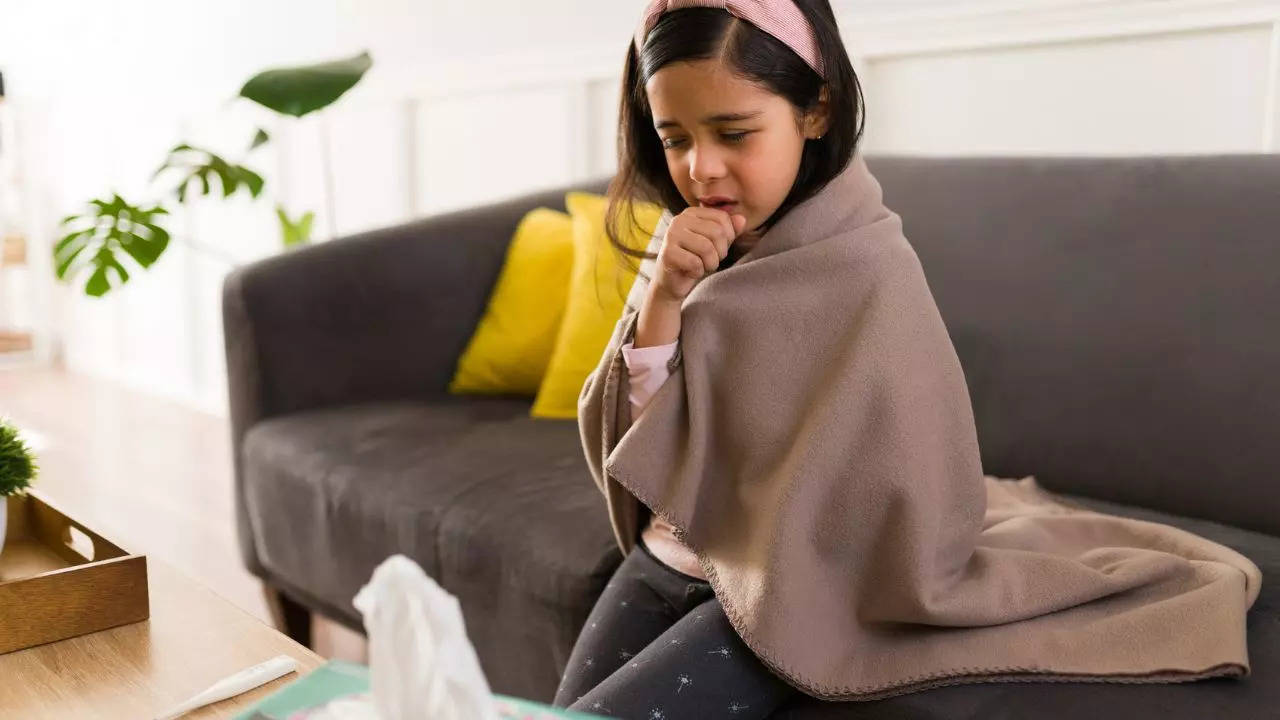As Pneumonia Cases Surge Globally, Here’s What Parents Need To Know About Its Worrying Symptoms
Childhood pneumonia cases are rising globally, causing concern among parents. We try and provide straightforward answers to ease their worries regarding the possible new global threat.

Pneumonia Cases Surging In Children
Photo : iStock
The sudden surge in pneumonia cases in China has raised concerns among parents in India. In the post-COVID era, any outbreak originating in China tends to trigger fear among people. We spoke to leading doctors to understand the illness and provide parents with information that helps them prevent panic and equip them to be better prepared in handling such situations.
To begin with, let's understand why children are particularly vulnerable to this respiratory illness. Dr. Lancelot Mark Pinto, Consultant Pulmonologist and Epidemiologist, P. D. Hinduja Hospital & Medical Research Centre, Mahim explains, “Children have an immune system that is learning to fight infections and can therefore be prone to pneumonias more than healthy adults. Infection with viruses such as respiratory syncytial virus, influenza, rhinovirus, adenovirus is all common among children, and can cause severe infections.”
Dr. Sushila Kataria, Senior Director, Internal Medicine, Medanta, Gurugram adds, “Common causes of pneumonia include viral infections like RSV and flu, as well as bacterial infections such as streptococcus or staphylococcus. Lesser-known causes involve viruses like COVID and adenovirus, along with bacteria like mycoplasma, particularly in children. Additionally, chemical pneumonia can occur due to accidental ingestion or inhalation of oily substances. Risk factors often stem from weakened immunity due to disease or medication, secondary smoking exposure, increased pollution, and the presence of congenital disorders like cystic fibrosis or bronchial asthma, which elevate the risk of severe pneumonia in children.”
To curb the spread of pneumonia, China recently reinstated the use of mask and reinforced social distancing rules. This makes us question if its contagious nature poses a potential threat to children elsewhere as well. Dr Kataria explains that pneumonia infections are typically contagious, primarily caused by viruses and bacteria, with modes of transmission including droplets, airborne infection, or contact. Whether it's COVID, flu, RSV, adenovirus, streptococcus, or staphylococcus, these infections spread through coughing, sneezing, and contact with infected individuals. Therefore, most pneumonias are contagious, requiring necessary precautions to be taken. Dr Lancelot further adds, “Winters tend to be a time of the year when viruses thrive, and kids tend to transmit very easily, as they are in constant close contact with each other, and often do not take precautions such as hand washing, and distancing. Wearing masks isn’t really a realistic solution among kids. What we really need to do is be liberal with children who are absent from school because of being ill and encourage such behaviour. Having a system of surveillance to be sensitized to an outbreak and have circuit breakers (shutting down classrooms temporarily when there is an outbreak) might be worth considering.”
Lesser-known signs of pneumonia
Common symptoms of pneumonia include cough and chest pain but there are some less common signs too. “Less common and lesser-known symptoms may include the child becoming dull and lethargic, refusing breastfeeding or experiencing decreased oral intake. Additionally, symptoms like blue discoloration of toes, tongue, nose tip, and ear tip, non-responsiveness or unconsciousness, and potential multi-organ dysfunction can occur. Failure to thrive and gain weight are also less recognized symptoms of pneumonia. These lesser-known symptoms should be acknowledged alongside the more typical signs of pneumonia,” answers Dr Kataria.
Talking about cough, Dr Lancelot shares, “Every cough, in the context of a sick individual, or a person with a low immunity, can be pneumonia. A detailed clinical examination by a doctor, a chest X-ray and blood tests can help make the diagnosis.”
When questioned whether we can recognize a cough linked to pneumonia, Dr. Kataria commented, “Cough is a general symptom arising from irritation in the upper airway, extending from sinuses and nose to the throat, trachea, and lungs. It can be categorized as dry, with no mucus production, or wet, when mucus is present. The color and type of mucus (translucent, yellow, green) vary based on causes such as allergies, bacteria, or viruses. Coughs can be acute (lasting less than two weeks) or chronic (lasting more than two weeks), with causes ranging from the upper to lower airway. A thorough examination of the cough's characteristics, including duration, intensity, and timing, is essential for identifying the underlying cause, as cough itself is merely a symptom.”
Worrying signs of pneumonia in children
In children, being listless, lethargic, and not engaging in usual activities are serious red flags. A child who is breathing at a faster rate, fever, persistent cough, breathlessness are all important signs to watch out for. Post-COVID, oximeters are widely available, and can be used as a monitoring tool. However, oxygen levels tend to drop only in severe disease, and it would be wise to seek help much before this occurs.
“Schools need liberal policies for ill children”
Vaccinations, as recommended by pediatricians, are very helpful in preventing severe disease. Dr Lancelot stresses on the need to cultivate a culture in which kids voluntarily stay away from others when they are sick, and if feasible, wear a mask to protect others when they have respiratory symptoms. “Hand washing cannot be overemphasized, and seeking care when symptoms appear is always useful to prevent severe disease. Schools need to have very liberal policies when it comes to allowing ill children to miss school and exams and accommodate them accordingly.”
Spike in walking pneumonia cases
"Walking pneumonia" is a term specifically used for cases caused by Mycoplasma. While pneumonia is a general term, "walking pneumonia" is applied when the patient is not severely affected and can continue with daily activities. This type of pneumonia, caused by the organism Mycoplasma rather than a virus, is treatable with antibiotics.
End of Article
Subscribe to our daily Lifestyle Newsletter!
Videos





02:10
Raveena Tandon addresses CONTROVERSIAL statements regarding Khushi Kapoor and Agastya Nanda in The Archi

03:16
Bigg Boss 17 update: Ayesha Khan alleges Munawar Faruqui of dual commitments with Nazila Sitaishi & her

00:34
Caught on Camera: Heavy Rockslide Stops Traffic on Jammu Srinagar Highway

03:18
Amitabh Bachchan's Heartwarming Moment with Grandson Agastya Nanda in front of his Fans

02:27
iQOO 12 5G | Glimpse of Exciting Leaks! | Funtouch OS Android 14, Qualcomm Snapdragon 8Gen3 & More













